Belgium Focus
Research Group: Professor Gert Desmet, Transport Modelling & Analytical Separation Science, Vrije Universiteit Brussels, Brussels.
Research Group: Professor Gert Desmet, Transport Modelling & Analytical Separation Science, Vrije Universiteit Brussels, Brussels.

Research Focus: The Transport Modelling and Analytical Separation Science group is part of the Department of Chemical Engineering of the Faculty of Engineering Sciences. The group currently has eleven PhD students and one post-doc and is headed by Gert Desmet, who is also head of the department. The group focuses on the miniaturization of separation methods and on the investigation and the modelling of flow effects in commercial and innovative chromatographic systems. The activity of the group in the field of chromatography started in 1999 by practically demonstrating the giant leap in separation speed that can be achieved by using shear-driven flows in 100 nanometere-deep channels.
Since then, the group has gained great expertise in the design, fabrication and testing of miniaturized or "on-chip" separation systems. In this area, the group is currently coordinating a large-scale project funded by the Flemish government to fabricate micro-machined chromatographic columns, in collaboration with seven partners. The group is also involved in several research projects comparing the performance limits of several novel commercial packing types (monoliths, sub-2 µm particles) and chromatographic operation modes (ultra-high pressures, high temperatures). For this work, the group cooperates extensively with groups of Kazuki Nakanishi (University Kyoto, Japan), Pat Sandra (Pfizer Analytical Research Center, Belgium), Peter Schoenmakers (University of Amsterdam, The Netherlands), Jean-Louis Rocca and Sabine Heinisch (University of Lyon, France), Jean-Luc Veuthey (University of Geneva, Switzerland) and many others.
To support and guide this work, the group has also developed a substantial theoretical activity, partly based on the use of computational fluid dynamics.
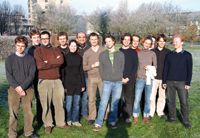
The main aim of this work is to obtain a better understanding of the relation between performance of high performance liquid chromatography (HPLC) supports and the packing structure and the flow and heat transfer characteristics of the columns. To conduct this theoretical work, the group uses a high-performance, 60-processor computer cluster.
E-mail: gedesmet@vub.ac.be
Research Group: Professor Eddy Esmans and Professor Filip Lemière, Nucleoside Research and Mass spectrometry Unit. University of Antwerp, Department of Chemistry, Antwerp,
Research Focus: This research unit has been involved in liquid chromatography mass spectrometry (LC–MS) research since 1978 when it purchased a direct liquid introduction (DLI) LC–MS system.
The group is currently involved in several projects, including the detection and analysis of DNA-adducts as initiators of tumour formation in real life samples; the identification of urinary nucleosides as early biomarkers for cancer (in collaboration with Professor Russell Newton and Professor Ed Dudley of Swansea University, UK); and the analysis of environmental samples for the occurrence of polyfluorinated molecules such as perfluorooctane sulphonic acid (PFOS) in collaboration with Professor Wim De Coen and Professor Ronny Blust from the University of Antwerp).
The team has also a large interest in plant proteomics in collaboration with Professor Harry Van Onckelen (University of Antwerp, Belgium) and Dr Erwin Witters (Flemish Institute for Technological Research & University of Antwerp, Belgium).
The main analytical techniques used are LC–MS, specifically miniaturized electrospray ionization tandem mass spectrometry (ESI-MS–MS). In the case of plant proteomics an important amount of data is gathered by matrix assisted laser desorption/ionization time-of-flight–time-of-flight mass spectrometry (MALDI-TOF–TOF MS) after separating the proteins by two–dimensional gel electrophoresis (2D GE) or liquid chromatography (LC). ESI-MS–MS is used for the LC–MS–MS analysis of tryptic digests, if necessary.
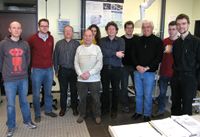
The group has been one of the pioneers of miniaturized LC–MS in these topics. As often is the case in the analysis of biochemical and biological samples a limited amount of sample is available and compounds of interest are present in very low quantities.
Therefore LC–MS methodologies were developed using capillary – and nano-HPLC columns in reverse phase (RP) and hydrophilic interaction chromatography (HILIC) mode with an internal diameter of 300 µm and 75 µm respectively. These were coupled to nano-electrospray ionization (nESI) for the qualitative and quantitative analysis of the samples. Approximately 3700 times less sample was required for the 75 µm column compared with a 4.6 mm internal diameter (i.d.) column with no reduction in concentration sensitivity. In many cases the LC–MS analysis of the samples is performed in combination with column-switching techniques.
E-mail: filip.lemiere@ ua.ac.beeddy.esmans@ua.ac.be
Research Group: Professor Jos Hoogmartens, Professor Ann Van Schepdael and Professor Erwin Adams, Laboratory for Pharmaceutical Analysis, Catholic University of Leuven, Leuven.
Research Focus: The team's activities are targeted towards the application of chromatographic (gas, liquid) and electrophoretic techniques to pharmaceutical analysis.
Liquid chromatography (LC) focuses on the development and validation of methods for the analysis of drug substances and drug products. Different detection methods are available: ultraviolet (UV), fluorescence (F), evaporative light scattering detection (ELSD), charged aerosol detection (CAD), pulsed electrochemical detection (PED) and mass spectrometry (MS). Several kinds of substances are studied, but stress falls on antibiotics and antiviral drugs. A number of methods developed have been incorporated in official compendia like the European and International Pharmacopoeia.

To help to select a suitable reversed-phase (RP) column, a characterization procedure has been developed using three simple chromatographic tests that allow the determination of four parameters for each column. Based on these, a ranking of the columns from most similar to dissimilar versus a freely to choose reference column can be obtained. More information can be found on pharm.kuleuven.be/pharmchem/Pages/7_CCS.html.
Gas chromatography (GC) is applied to determine volatile substances in pharmaceuticals. Residual solvents are detected, but also volatile impurities and degradation products. To distinguish between them, mass spectrometry (MS) is necessary. However, quantitative application of MS is hampered by signal instability. Solutions to improve this and alternative detectors are currently being investigated.
In the field of capillary electrophoresis (CE), the research is in two main areas: method development for the analysis and stability testing of drugs (with an emphasis on the impurity profiling of antibiotic substances) and the application of electrophoretically mediated microanalysis (EMMA). The EMMA aspect comprises the use of in-line systems that allow the interaction of different plugs of either enzyme and substrate or analyte and derivatization reagent, followed by the separation of the reaction products formed. This method has been applied to several types of enzymes and analytes, with the current focus on the cytochrome P450 enzymes because of their importance in drug behaviour in the human body. The laboratory is also establishing a capillary electrophoresis–mass spectrometry (CE–MS) system with a home-built interface.
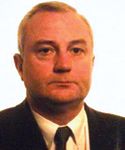
E-mail: jos.hoogmartens@pharm.kuleuven.be
Research Group: Professor Bart Devreese and Professor Jozef Van Beeumen, Laboratory for Protein Biochemistry and Protein Engineering, Ghent University.
Research Focus: The unit for Mass Spectrometry and Proteomics within the Laboratory for Protein Biochemistry and Protein Engineering is involved in separation sciences in protein and proteomics research. The group pioneered the use of nano-liquid chromatography (nLC) combined with electrospray ionization mass spectrometry (ESI-MS) to identify two-dimensional polyacrylamide gel electrophoresis (2D-PAGE) separated proteins, both from microbial and animal origin. Recent work involved the implementation of an interface between two dimensional strong cation exchange coupled to reversed-phase chromatography (2D-SCX×RP) capillary HPLC and matrix assisted laser desorption/ionization time-of-flight–time-of-flight mass spectrometry (MALDI-TOF–TOF MS) for the in-depth analysis of membrane proteins.
There has also been a lot of research in novel protein identification strategies implementing chemical derivatization and tandem mass spectrometry (MS–MS). Current research efforts will focus on analysis of protein complexes, using miniaturized affinity separation techniques and on bottom-up proteomic analysis using chemical and metabolic stable isotope labeling. The group of Bart Devreese is a partner in a Flemish government-supported collaborative effort for developing microfluidic devices to be implemented in proteomic research involving pillar chromatography.
This group also developed capillary electrophoresis–mass spectrometry (CE–MS) applications on hybrid quadrupole ion trap instruments for profound analysis of the carbohydrate composition and linkage analysis of glycoproteins. CIEF has been implemented to separate and characterize different glycoforms at the protein level. These methods were applied in the study of glycosidases and hemocyanins.
The unit is imbedded in an environment within the Laboratory for Protein Biochemistry and Protein Engineering which also includes a structural biology, a protein and glycan engineering group that uses several preparative chromatography approaches for purifying proteins and glycoproteins.

E-mail: bart.devreese@ugent.be
Research Group: Department of Analytical Chemistry and Pharmaceutical Technology, Pharmaceutical Institute, Vrije Universiteit Brussel led by Professor Johanna (An) Smeyers-Verbeke and Professor Yvan Vander Heyden for Analytical Chemistry, and by Professor Jacqueline Plaizier-Vercammen for Pharmaceutical Technology.
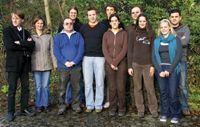
Research Focus: The Analytical Chemistry research group has separation science and applied chemometrics as the main research areas. The aim of the group is to evaluate the rational use of new techniques in pharmaceutical analysis, where techniques refer both to separation and data analysis techniques.
In separation science, research is performed on chiral separations for specific cases, specified by industrial partners, and to define generic separation strategies in different techniques, such as capillary electrophoresis (CE), normal phase liquid chromatography (NPLC), reversed-phase liquid chromatography (RPLC), polar organic solvent chromatography (POSC), supercritical fluid chromatography (SFC) and capillary electrochromatography (CEC). In a second instance, the development of methodologies to obtain suitable fingerprints of herbal extracts by means of HPLC is investigated. Fingerprints are complex chromatograms, which allow the quality of an extract to be identified and evaluated.

Drug impurity profiling by means of high performance liquid chromatography (HPLC) and the selection of dissimilar systems, that is, systems with different selectivities, are also studied. Monolithic columns and (sub)micron-sized particle-based columns are examined in CEC for their performance in the analysis of drug substances and their impurities, chiral separations and fingerprint development. Recently, a project was started to introduce separation techniques such as CE, in microbiology, and more specifically in virology.
The data analysis aspects are mainly related to separation science data. They comprise, for example, the application of data pretreatment techniques, such as warping methods, variable reduction and visualization techniques, such as principal component analysis, pattern recognition methods and multivariate calibration techniques on fingerprint data. Predictive quantitative structure-retention relationship (QSRR) models are also constructed and allow predicting the chromatographic retention of solutes, based on their physicochemical or structural properties. Based on the same properties, QSAR models are built to predict the passage of drug molecules over cellular membranes, for example, the gastro-intestinal absorption or the blood–barrier passage. There is also a focus on method validation and on experimental designs.

E-mail: yvanvdh@vub.ac.be
Research Group: Professor Luc Nagels, Organic Chromatographic Trace Analysis, Antwerp University, Antwerp.
Research Focus: The group is focused on applications of potentiometric sensors in high performance liquid chromatography (HPLC) and (more difficultly) in capillary electrophoresis (CE). Sensors which change surface potential when contacting analyte ions are an unexplored area of research in separation science. Other groups did pioneering work in the 1990s, but solving the puzzle of finding good sensor coatings for separation science has just started. One major problem until now was, surprisingly, the fact that electrochemists did not believe that potentiometric sensors reacted rapidly and sensitively to many industrial-, biotechnology- and pharmaceutically-oriented organic molecules.

Even large and highly charged molecules, such as DNA and bioparticles, give surprisingly high responses. The study of the interaction of these highly charged molecules with surfaces is quite new. Electric surface potentials are part of nature, but are still badly understood. This is also the case for the interaction of small ionic organic compounds. It is to be expected that LC and other separation methods will bring potentiometry in another era, as they did with spectroscopic, for example ultraviolet (UV), and spectrometric, for example mass spectometry (MS), methods.
The group firmly believes in the enormous potential of potentiometry for sensors. Separation methods provide the vehicle to explore them, and the sensors will be used as detection devices in separation methods. The group started a spin-off company, Octens, for dissolution applications in the pharmaceutical sector.
E-mail: luc.nagels@ua.ac.be
Research Group: Professor Pat Sandra, Ghent University and the Research Institute for Chromatography, Ghent.
Research Group: Research at the Ghent University is mainly in the framework of the Pfizer Analytical Research Centre (PARC), which was established in 2003 to drive innovation and productivity in pharmaceutical analytical sciences. PARC is a multidisciplinary collaboration with the aim of generating high-throughput analytical systems for pharmaceutical analysis and drug discovery, introducing novel approaches to pharmaceutical analysis such as green chromatography and making advances with innovative ideas and concepts for analytical work in the 21st century. These projects involve collaboration between experts in academia and industry.

At present, eight postdoctoral and six PhD students work on the following research topics: the synthesis of thermoresponsive and polymeric stationary phases for liquid chromatography (LC); elevated temperature and high pressure liquid chromatography (HPLC); comprehensive liquid chromatography (LC×LC); supercritical fluid chromatography (SFC); multi-array microemulsion electrokinetic chromatography (MEEKC); the development of bioactivity post-column reactors; and the synthesis of receptors for endocrine disrupting chemicals (EDC) metabolomics and lipidomics.
At the Research Institute for Chromatography (RIC), located in Kortrijk, eight professionals with a PhD degree perform research in gas chromatogrpahty (GC), liquid chromatography (LC) and supercritical fluid chromatography (SFC). These projects concentrate on method development, hardware development, training, consultancy and developing total analytical solutions.
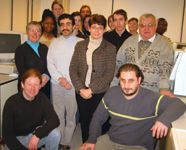
E-mail: pat.sandra@richrom.com
Research Group: Professor Joëlle Quetin-Leclercq, Professor Bernanrd Tilquin, Dr Marie-France Hérent, Dr Aubert Maquille and Dr Céline Rivière, Chemical and Physico-chemical analysis of Drugs and Pharmacognosy (CHAM) unit, Université catholique de Louvain, Faculty of Medicine, Department of Pharmacy, Brussels.
Research Focus: The team is divided into two research groups: pharmacognosy and drug analysis. The pharmacognosy group's expertise is in the isolation, identification and quantification of biologically active molecules from plant material. This work involves the preparation of crude extracts, followed by their fractionation and purification by different preparative methods [including counter-current chromatography (CPC), semi-preparative column chromatography and optimum performance laminar chromatography (OPLC)] and the chemical identification of isolated compounds or known compounds in mixtures (including essential oils) and quantification. The group's major concern is the validation of activity and the isolation of active molecules from plants used in traditional medicine. It also develops methods for the quantification of these molecules in plants or extracts and their rapid identification by liquid chromatography mass spectrometry (LC–MS) or gas chromatography mass spectrometry (GC–MS) methods in collaboration with Professor Habib Jiwan's laboratory (department of chemistry, UCL). The laboratory is approved by the Belgian Federal Agency for Medicines and Health Products for analysis of natural compounds. The drug analysis group studies the radiosterilization of drugs and analyses radiolytic products, often at trace levels.
E-mail: joelle.leclercq@uclouvain.be

New TRC Facility Accelerates Innovation and Delivery
April 25th 2025We’ve expanded our capabilities with a state-of-the-art, 200,000 sq ft TRC facility in Toronto, completed in 2024 and staffed by over 100 PhD- and MSc-level scientists. This investment enables the development of more innovative compounds, a broader catalogue and custom offering, and streamlined operations for faster delivery. • Our extensive range of over 100,000 high-quality research chemicals—including APIs, metabolites, and impurities in both native and stable isotope-labelled forms—provides essential tools for uncovering molecular disease mechanisms and exploring new opportunities for therapeutic intervention.
New Guide: Characterising Impurity Standards – What Defines “Good Enough?”
April 25th 2025Impurity reference standards (IRSs) are essential for accurately identifying and quantifying impurities in pharmaceutical development and manufacturing. Yet, with limited regulatory guidance on how much characterisation is truly required for different applications, selecting the right standard can be challenging. To help, LGC has developed a new interactive multimedia guide, packed with expert insights to support your decision-making and give you greater confidence when choosing the right IRS for your specific needs.

.png&w=3840&q=75)

.png&w=3840&q=75)



.png&w=3840&q=75)



.png&w=3840&q=75)










